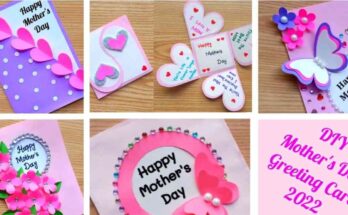In today’s fast-paced fashion world, the savvy shopper knows that style doesn’t have to come with a hefty price tag. Balancing a love for fashion with financial responsibility is an art form that pays off in the long run. With expert tips and a little know-how, anyone can learn to navigate the retail landscape to find those hidden gems without compromising the wallet. Recognizing the value in brands that cater to the style-conscious on a budget is just the start. The true art lies in the strategy – combining those finds with intelligent purchasing decisions that lead to a fabulous and cost-effective wardrobe.
Finding Value in Fashion: Quality vs. Cost
Regarding fashion, the real value is found not in the price tag but in the quality of the purchase. Achieving the ideal balance between cost and quality might save money. Because of their extended lifespan, certain Pretty Little Thing products are worth a more significant initial cost. An example of a durable boot would be more expensive initially, but it will last longer than many less costly options if it has a solid sole and premium leather. Assessing fabric quality, stitch work, and overall build is critical in gauging whether apparel will stand the test of time. These pieces form the backbone of a lasting wardrobe, creating value beyond their initial price.
Building a Timeless Wardrobe on a Budget
A timeless wardrobe is an investment in style and self-presentation. Cultivating such a collection doesn’t require excess funds but rather strategic choices. Start with staple items like a tailored white shirt, a versatile pencil skirt, or classic denim jeans. These foundational pieces act as a versatile canvas, allowing for many looks that can be dressed up or down with accessories. Speaking of accessories, they are the alchemist’s stone of fashion. A vibrant scarf or a distinctive belt can instantly transform the mood of an outfit, offering a cost-effective method to diversify your wardrobe without continually buying new outfits.
Smart Shopping Habits to Cultivate
One of the most impactful habits a fashion shopper can cultivate is mindfulness—resisting the pull of impulsive purchases driven by trends and instead focusing on intentional buying. By adopting a more thoughtful approach, you stop cluttering your closet with items that serve no purpose or don’t fit with the rest of your wardrobe. Moreover, shopping off-season is a clever hack to snagging deals; winter coats and swimsuits are often much cheaper when bought during opposite seasons. Lastly, adopting a capsule wardrobe philosophy ( curating a limited selection of interchangeable items) can streamline your closet and minimize unnecessary spending.
Maximize Savings with Deals and Discounts
The thrill of getting a great deal is unmatched in the shopping arena. But beyond the rush, there’s real value in finding discounts that cut down the final price of a purchase. A straightforward way to save is couponing and seeking promotional codes that work wonders for the budget-conscious. Seasonal sales also provide opportunities for deep discounts; with patience and timing, holiday clearances and end-of-season sales can significantly bolster the savvy shopper’s closet. Alerts and price tracking systems that notify you when prices drop to ensure you never miss out on a steal, getting you the best possible price for your desired items.
Care and Maintenance: The Hidden Savings
The lifespan of your clothing can be significantly extended with proper care and maintenance, leading to significant savings. It’s not just about laundering garments according to their care labels, though that’s important; it’s about understanding which materials require special attention, how to store items to avoid damage, and when a garment could benefit from some at-home mending. In some instances, it is worth investing in professional services, like tailoring or dry cleaning, to ensure that an item remains a staple in your wardrobe for as long as possible, ultimately reducing the cost-per-wear and negating the need for frequent replacements.
Second-Hand and Vintage: A Shopper’s Goldmine
The second-hand market offers incredible opportunities for finding trend-setting and classic fashion at a fraction of the cost. Thrifting, when done right, can lead to high-quality clothing reaching your wardrobe without the high price tag that often comes with fresh off-the-shelf items. However, the key to successful second-hand shopping is knowing what to look for: gently used, well-made, and timeless items in their style. The second-hand market is a treasure waiting to be discovered by anyone willing to invest a little time and patience in their search for the next big find, whether they are browsing internet platforms or your neighborhood consignment stores.
Ethical Shopping: A Cost to Consider?
Ethical shopping is a commitment to making purchasing decisions that benefit not only the buyer but also the buyer and the maker. While some may balk at the potentially higher costs of ethically made clothes, the investment in sustainable fabrics and fair labor practices can pay dividends in quality and longevity. Moreover, aligning your wardrobe with your values can be deeply satisfying, fostering a more meaningful relationship with the clothes we wear and the story they tell. As demand increases for ethical practices, prices may adjust to become more accessible, allowing for a conscientious approach without excessive costs.
Creating a Fashion Budget: Tools and Techniques
The most crucial step in becoming a budget-savvy fashionista is setting and adhering to a budget. Determine a reasonable amount to spend on apparel each month or year, considering your overall financial picture and goals. Track your spending using budgeting tools or apps, and account for what you save with discounts to gauge your financial efficiency accurately. Be prepared to adjust your fashion budget alongside changes in your financial situation, and watch as your closet and savings grow in harmony.




